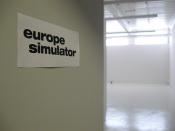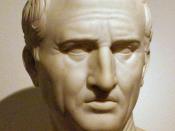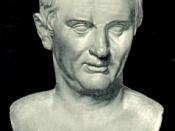Rennaissance and Reformation
Section 1-The Italian Rennaissance
- Italy was not a unified country until the 1860's. At the beginning of the Renaissance, it consisted of about 250 separate states, most of which were ruled by a city. Some cities had only 5,000 to 10,000 people.
- Others were among the largest cities in Europe. For example, Florence, Milan, and Venice had at least 100,000 people each in the early 1300's.
- At the dawn of the Renaissance, much of Italy was supposedly controlled by the Holy Roman Empire.
- However, the emperors lived in Germany and had little power over their Italian lands. The popes ruled central Italy, including the city of Rome, but were unable to extend political control to the rest of Italy.
- No central authority was thus established in Italy to unify all the states.
- During the mid-1300's and early 1400's, a number of major Italian cities came under the control of one family.
- For example, the Visconti family governed Milan from the early 1300's until 1447, when the last male member died. Soon after, the Sforza family took control of Milan and governed the city until the late 1400's. Other ruling families in Italy included the Este family in Ferrara, the Gonzaga family in Mantua, and the Montefeltro family in Urbino.
- The form of government established by the ruling families of the Italian cities was called the signoria, and the chief official was known as the signore. All power was concentrated in the signore and his friends and relatives.
- An elaborate court slowly grew up around each signorial government. At the court, the area's leading artists, intellectuals, and politicians gathered under the sponsorship of the signore.
- Other Italian cities had a form of government known as republicanism.


